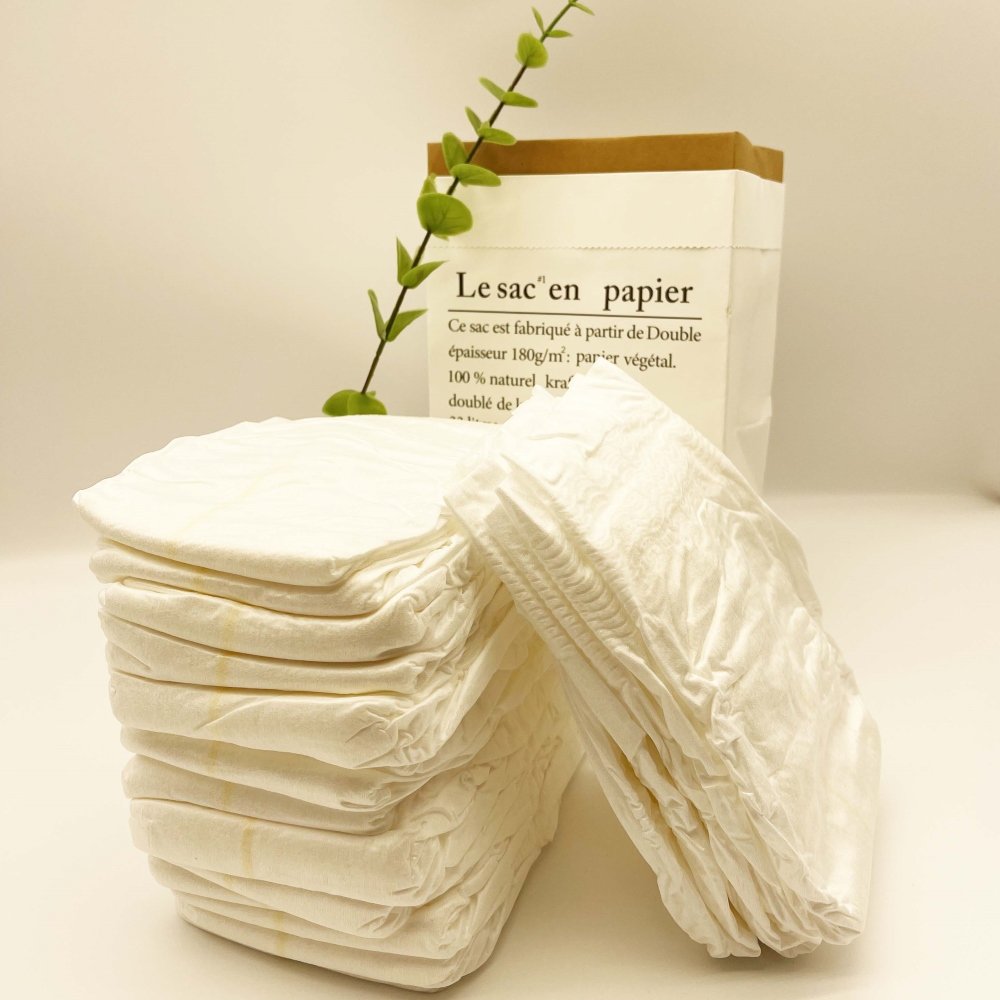Bamboo diapers are gaining popularity as a sustainable alternative to traditional disposable diapers. They combine eco-friendliness with functionality, offering parents a greener choice without compromising on performance. These diapers are made from bamboo, a fast-growing and renewable resource, which makes them incredibly soft and highly absorbent. They are the perfect choice for families who prioritize sustainability and eco-friendliness.
The shift towards eco-friendly products has led to an increase in the variety of green diapering options available to parents. Bamboo diaper stands out in this growing market due to their natural benefits and sustainable production processes, marking a significant step forward in the eco-friendly movement.
The Raw Material: Bamboo
Why Bamboo is Eco-Friendly and Sustainable
Bamboo is a cornerstone of the eco-friendly diaper market due to its sustainable growth patterns. It requires less water and no pesticides to thrive, making it a more environmentally friendly option compared to traditional cotton or synthetic materials.
The Harvesting and Processing of Bamboo
The process of turning bamboo into diaper starts with the harvesting of the bamboo plant, which is done in a way that allows it to continue growing, minimizing environmental impact. The bamboo is then processed into a pulp, which is eventually transformed into the soft, absorbent fabric used in diaper.
Processus de fabrication
Transforming Bamboo into Fabric
The manufacturing process of bamboo diaper involves converting the bamboo pulp into fiber through hydrolysis-alkalization and multi-phase bleaching. This fabric is then woven into sheets that form the core of the diaper, which is known for its softness and high absorbency.
Crafting the Diapers: From Fabric to Finish
The final step in the manufacturing process involves assembling the various components of the diaper. This includes adding layers for absorbency, fitting elastic bands for a snug fit, and applying waterproof coatings to prevent leaks.
Benefits of Bamboo Diaper
Impact environnemental et durabilité
Bamboo diapers have a lower environmental impact than traditional diapers. They are biodegradable and compostable, reducing landfill waste. Bamboo’s sustainable growth also means less deforestation and pollution.
Health and Comfort for Babies
Bamboo fabric is the perfect choice for individuals with sensitive skin as it possesses natural hypoallergenic and antibacterial properties. It also has excellent moisture-wicking properties, keeping babies dry and comfortable.
Comparative Analysis
Bamboo vs. Traditional Diaper
Comparing bamboo to traditional diapers highlights its advantages, including better environmental sustainability, skin friendliness, and absorbency.
Cost-Benefit Analysis
While bamboo diaper might initially cost more, their long-term benefits, such as reduced environmental impact and health advantages, offer significant savings and value.
How Are Bamboo Diapers Made?
Step-by-Step Production Process
The production of bamboo diaper involves several key steps, from the sustainable harvesting of bamboo to the careful manufacturing processes that ensure the final product is eco-friendly and safe for babies.
Quality Control and Industry Standards
Throughout the production process, stringent quality control measures are in place to meet industry standards, ensuring that the bamboo diapers are of the highest quality and safe for use.
Challenges and Solutions
Overcoming Production Hurdles
Manufacturers face challenges such as maintaining sustainability throughout the supply chain and meeting high consumer demand, but innovative solutions and technological advancements are helping to overcome these hurdles.
Innovation in Bamboo Diaper Technology
The bamboo diaper industry continues to evolve, with ongoing research and development leading to more efficient and sustainable production methods.
Consumer Insights
Market Trends and Demand
Consumer demand for eco-friendly products is on the rise, with bamboo diaper becoming increasingly popular as parents become more aware of their environmental impact.
Customer Reviews and Testimonials
Positive feedback from users who praise the comfort, absorbency, and eco-friendly nature of bamboo diaper helps drive their growing popularity.
Care and Maintenance
Tips for Reusable Bamboo Diapers
Proper care and maintenance, including regular washing and avoiding harsh chemicals, can extend the life of reusable bamboo diapers.
Disposal of Disposable Bamboo Diapers
Even disposable bamboo diaper need to be disposed of responsibly to ensure they break down properly and minimize their environmental impact.
Bamboo Diapers and Environmental Responsibility
The future of diapering looks green, with bamboo diapers leading the way. Their sustainable production, environmental benefits, and user satisfaction point toward a continued trend of eco-conscious parenting.
This detailed exploration into how bamboo diapers are made showcases their environmental and health benefits, offering a sustainable solution for environmentally conscious parents. Bamboo diapers not only support the health and comfort of babies but also contribute significantly to the reduction of environmental waste, making them a preferred choice for those looking to minimize their ecological footprint.
Conclusion: The Future of Diapering
Bamboo diapers represent a significant advancement in sustainable childcare products. Eco-conscious parents can now choose a solution that’s both practical and comfortable for their babies. There is no doubt that the demand for eco-friendly products is steadily on the rise. Bamboo diaper has emerged as a promising solution for the environmental concerns associated with traditional diapering methods. With their sustainable and biodegradable properties, they offer a more constructive approach towards diapering that benefits both parents and the planet.
In conclusion, bamboo diapers are more than just an eco-friendly alternative; they are a testament to the possibilities of sustainable living and the positive impact that thoughtful choices can have on our planet. Looking ahead, the growing adoption and advancement of bamboo diapers are expected to have a positive impact on fostering a more eco-friendly and sustainable future.
Frequently Asked Questions
How long do bamboo diapers take to biodegrade?
Bamboo diapers are designed to be more eco-friendly and typically biodegrade within 3 to 6 months under the right conditions, unlike traditional diaper that can take hundreds of years to break down.
Can bamboo diapers be used for overnight protection?
Yes, due to their high absorbency and breathability, bamboo diaper is an excellent choice for overnight use, ensuring that babies stay dry and comfortable throughout the night.
Are bamboo diapers cost-effective in the long run?
Initially, bamboo diapers may seem more expensive than traditional disposable diapers. However, considering their reusable nature and durability, they can be more cost-effective over time, reducing the need for frequent purchases.
Do bamboo diapers contain any harmful chemicals?
Most bamboo diapers are made using safe, non-toxic processes and are free from harmful chemicals like chlorine, latex, and phthalates, making them safer for babies and the environment.
How can I ensure the bamboo diaper I buy are sustainably sourced?
Look for certifications such as OEKO-TEX, FSC, or similar, which indicate that the bamboo used in the diaper has been sourced sustainably and ethically.
What makes bamboo a sustainable material for diapers?
Bamboo is a highly renewable resource that grows quickly, requires little water, and doesn’t need pesticides or fertilizers to thrive, making it a sustainable choice for producing diaper.

